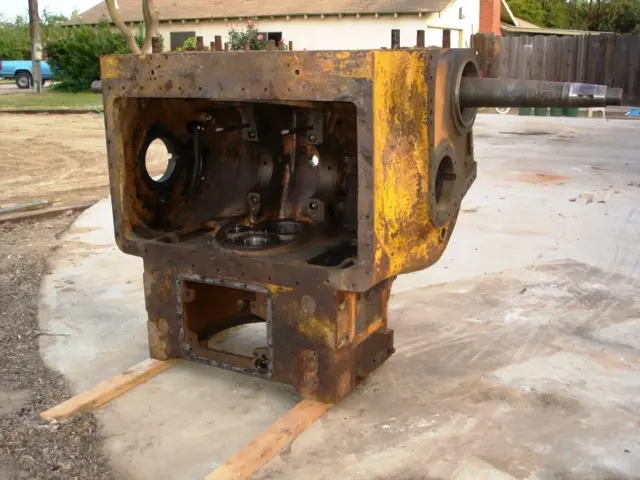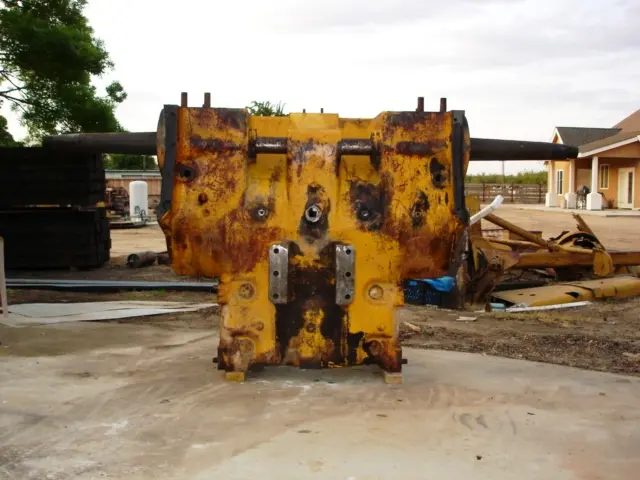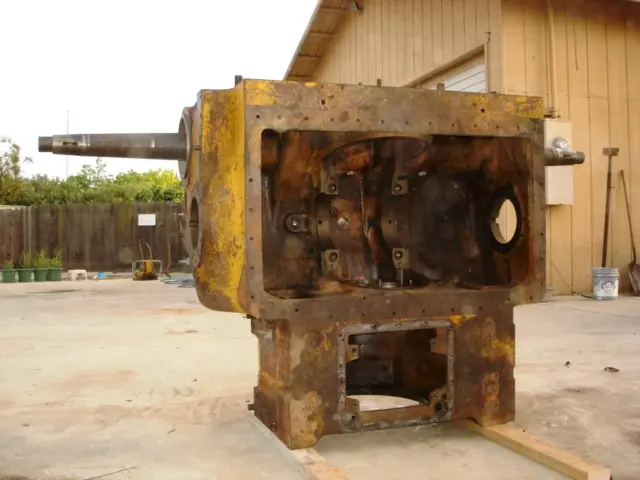Reply to John from Fresno:
Most transmission and transfer cases in trucks back then were coated with Rustoleum "Red Lead" to prevent the cast from weeping and seal the pores so the oil would run back to the bottom of the case. It was my understanding that the Rustoleum rusty metal primer was the same back then. It has to be brushed on from the can. I think they must have done that prior to any machining. And I am sure they were dipped in hot paint. After sandbalsting, I always give a good washing with gasoline to remove any sandblasting dust left behind.
John
Starting 1965, I worked for Skagit Corporation in their transmission department for 5 years. We built sub assemblies that were gear boxes, hydraulics, and so forth. After the gear boxes were cast in our foundry, they were put out in the yard in the weather for about a month or so; to age which releaved stresses. After the metal had setteled in, it was taken to the paint shop for the quick spray of red lead primer to the exposed surfaces. If they were ready for it in the machine shop, after debur, it was then machined to the blue print specifications, otherwise it was held in storage until it was needed. After machining, the housings came to our transmission department. Using the needle gun and die grinders, we removed all of the scale, sand deposits, casting flash, and so forth. Bores were honed to fit their Timken bearings, shavings were dug out of their tapped holes, and gasket surfaces were smooth out where the taps had pulled metal up. After a good solvent and air hose cleaning, we sealed the inside of the cases with a red lead colored transmission sealer made by the Preservative Paint Company. All though it might have been just an oil base paint, it was thinned with Lacquer. This sealer was only used on the insde of housings that the outside finish coat would never see. After brushing it on, it took about 3 hours to dry and it did a wonderful job of sealing in holes and other places where oil might escape. But where it was most important, is that it prevented any missed scale, sand or other debris from getting loose from the casting and getting in to the beaings. We finished our assembling and often mounted our transmissions on running test stands to check them for heat build up. Our equipment was built to all sizes. Many of the gear boxes we built were as big as the gear boxes used in a D-9. My title there was Jouneyman Assemblyman. From an internet gear box site they stated: "...the interior of gear housings should be painted with white epoxy sealer to provide a hard smooth surface that is easy to clean, seals porosity and seals in debris like casting sand. All components for assembly should be properly stored in a dry area prior to assembly. All gears and bearings should be covered, and bearings should be stored on their sides. " The most fascinating thing that I learned while working at Skagit was: the huge amount of fuzz left from our shop rags, contaminated the gear box enough to plug an oil filter. On government contracts we were required to filter all of the oil while running-in the gear boxes. That is where the clear oil filter quickly tells you, what you have in your oil. i.e. Shop rag fuzz, metal filings, scale etc.


